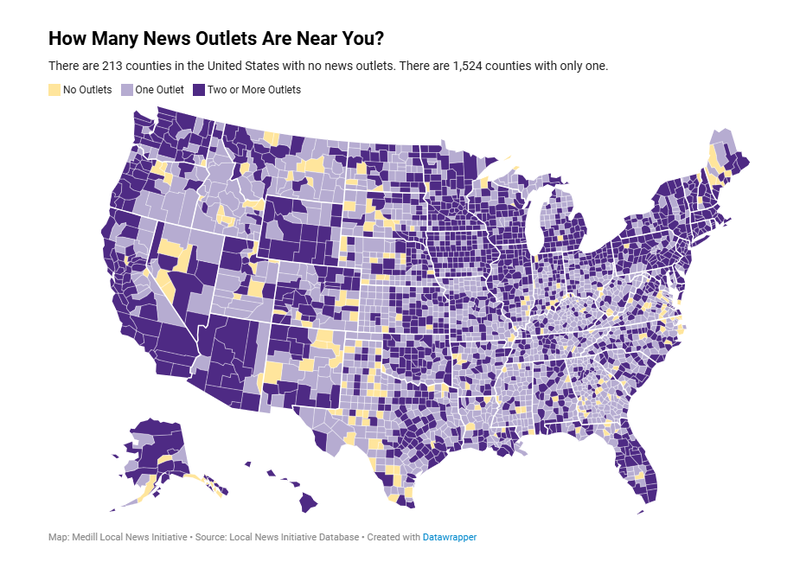
News deserts are expanding and more newspapers are shutting down, according to Northwestern University's Medill State of Local News report issued Monday.
"We track local news outlets across the U.S. including newspapers, digital-only sites, ethnic media and public broadcasting, and we do that so that we can spot trends in local news," said Chairman of local news at Medill Tim Franklin.
He said the report identifies areas of the country that are at high risk of losing local news so that community leaders, foundations and investors can address concerns.
He said in the past year 136 newspapers have closed. Meanwhile, food deserts have risen from 206 last year to 213 this year, particularly in rural areas.
"Newspapers are still the predominant way that people access local news and information in their communities across the country," Franklin said. "So, when you see kind of mass closures like this, it's very concerning."
According to the report, an estimated 50 million Americans live in counties with either no local news source or just one. Franklin said that this can cause these communities to suffer.
For example, new research has shown that in communities with news deserts, civic engagement also declines.
"Turnout in local elections, the number of candidates running for local office goes down, and that's because there's just not as much familiarity with the issues that are happening in that community," he said. "We also see more partisan voting, less split ticket voting in news desert communities. Because of the lack of local news, many folks just retreat to their partisan camps and vote straight ticket."
Franklin said government spending also rises in areas with no local news.
"There are no journalists minding the store, if you will, that are that are doing their watchdog function of monitoring what's happening with local governments," he said. "There was even one study that showed the corruption rises in areas where there's little to no local news."
And beyond this, Franklin said areas with news deserts lose a "glue that binds a community" together, as news outlets cover a range of issues, from local businesses, to schools, to community events.
"Those are things that really affect people's daily lives and that are relevant to their daily lives and that connect people within a community," he said. "I think what we're losing is that sense of connectedness, that does show communities as people."
At the same time, the report found that while news deserts are growing, many people still want to interact with news.
Franklin said in a poll Northwestern did of Chicago-area consumers, 85% said they consume local news at least once a week, and half do so daily.
"That shows that there's still a lot of demand and interest in local news. It's just that people are consuming it in different ways," he said.
Instead of newspapers, he said, people are turning to their smart phones for news. In Northwestern's survey, almost a third of respondents said they get local news from content creators Substack and other platforms like Instagram and TikTok.
And while he said there has been an increase in digital-only news sites, including more than 300 startups across the U.S., that isn't enough to solve the broader issue dying newspapers.
"We're not creating these startups at the same pace that we're losing newspapers, and many of these startups are centered in metro areas, and so they're not in places where we're losing a lot of local news, which is in rural areas as well as in suburban and exurban parts of the country," he said.
That's why he said the news industry needs to start being more creative in how they reach audiences, especially as consumers have started relying on AI platforms like ChatGPT and AI generated responses in Google for news
"It's resulting in less traffic to local news organizations, which also means less programmatic ad revenue for those news outlets," he said. "Change is happening so quickly that news leaders need to be aware of meeting consumers where they are and where they are is not just in a newspaper or a television set or a radio station, but it's on social media and it's on other platforms."
